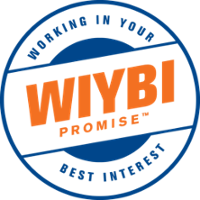
The risk of distracted driving and the accidents it causes has increased exponentially in the recent decade. As phones, tablets, and even in-vehicle screens become more common, drivers' eyes and hands are drawn away from the task of driving.
Even so, it may come as a surprise that distracted driving accounts for nearly 20% of fatal vehicle crashes in the US, according to NHTSA data. This includes both commuters and commercial fleet drivers. One of the greatest risks of a modern, technologically coordinated fleet is the increased temptation for distracted driving.
How can you connect drivers with smart screens, fleet apps, and live coordination without increasing the risk of distracted driving? Fortunately, technology has answers for us in this realm, as well.
(Intuitive) Hands-Free Calls and Apps
Hands-free apps are the first layer of defense against distracted driving. Keeping driver hands on the wheel increases their ability to respond quickly and effectively to changing road conditions. The key, however, is intuitive voice controls for hands-free apps. If the voice controls are frustrating or inaccurate, drivers will find themselves reaching for the touch screen.
Make sure your hands-free features work for drivers in practice runs before relying on voice-command systems on the road. This ensures that your apps provide only a safety feature and don't add frustration to driver distractions.
Telematics Detect When the Vehicle is In Motion
Telematics read the car's activity as it happens, including speed, velocity, and frequency of position change. This data can be used to detect whether your drivers are parked, cruising, or actively piloting through a difficult situation. Telematics can tell you when it's safe to talk to drivers and send messages, and when waiting a few minutes could save lives and route times.
There are two automated ways to use telematics to reduce or eliminate driver distractions.
Block Calls While Driving
The first is to protect your drivers from interruptions when their vehicle is in motion. This ensures that solo drivers are not distracted by flashing UI screens, phone conversations, or unexpected sounds when they are driving.
Call blocking can be especially useful for solo teams where there is no passenger to answer the phone while the driver drives. You can even dim in-vehicle screens while the car is in motion to reduce app-based distractions.
Motion-Based Availability Status
The second option creates information and puts the decision in the fleet manager's hands. Telematics can be used to create driver status, ranging from "busy driving" through "cruising slowly" to "parked with brakes".
This lets fleet management HQ know when each driver is most likely able to interact with mobile devices and phone conversations safely.
Audio Cues from Managed Navigation Programs
You can make an app that chirps and pings in soft, predictable ways that your driver can interpret as they drive. A ping that says 'client is home and ready for service' is less distracting than a conversation with the same message.
You can create an audio library that drivers learn to interpret to replace standard communications. This makes use of your driver's additional senses and ability to intake information while driving without requiring the interactive attention of an app or a phone conversation.
Route Client Calls to HQ Instead of Drivers
When a client calls to ask where their driver is, don't ring the driver. In most situations, these calls occur while drivers are on the road navigating to the client's location. The best route is through HQ where someone can let the client know the vehicle is on its way without revealing specific information or interrupting the driver as they pilot your fleet vehicle.
Fleet HQ can use their coordination data to provide clients with apt information while also protecting drivers from the distraction of calls and follow-up questions as clients wait for your team to arrive.
Equip and Delegate to Vehicle Passengers
The passengers in a fleet vehicle can contribute to driver distraction safety as well. By taking over communication duties, a passenger can field calls with HQ and interact with the fleet app to ensure that their team is on track.
This frees up the driver to handle traffic and respond only to updates on their navigational display when the time comes to follow or change a route.
Schedule Timely Lunch and Rest Breaks for Drivers
Finally, make sure your drivers and fleet teams have enough human-time breaks. Distracted driving is usually caused by technology, but discomfort can contribute heavily to a driver's distractions.
Use your fleet management technology to ensure every driver and team have rest breaks and meal breaks somewhere safe and sufficiently refreshing. Many teams like to plan specific stops that are most welcoming during their break from the service route.
Distracted driving is a risk of modern tech-coordinated business fleets - but it doesn't have to be. Block calls, dim the screens, and delicate coordination tasks when drivers are in motion and prioritize calls when each vehicle is stopped. Use telematics and scheduling technology to minimize distractions while still providing high-tech tools and solutions to your teams on the road. For more fleet management insights, contact us today!








